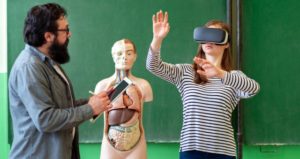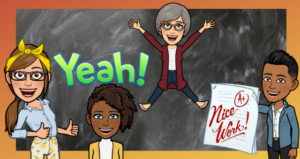
Technologies for Serving Different Learning Needs
This article first appeared in the Teaching Professor on August 7, 2018. © Magna Publications. All rights reserved. Just as all students are different, so are all


This article first appeared in the Teaching Professor on August 7, 2018. © Magna Publications. All rights reserved. Just as all students are different, so are all

No matter your specific discipline, teaching in the 21st century can often feel like you need an advanced degree in IT if you want to

It’s been a privilege to teach over some two decades, and during that time, I’ve found a series of techniques that were successful in the

We live in a time of never-before held access to information, which means educators must compete with a wide-ranging array of media for the finite

Trying new things and staying connected to students is of utmost importance for Deidre Price, PhD, director of Instructional Technology and Online Education at Northwest

Igniting an emotional connection to content inside the classroom can be a powerful tool for student retention, but intertwining technology and emotion in the classroom
It’s no secret that technology continues to transform the way educators teach and the way students learn. Increasingly, students want to be able to learn on their own terms–that is, they want to be able to study whenever, wherever, and however they choose, and they expect institutions and faculty to be accommodating. We’ve likely all had students who for one misguided reason or another believed that their professors—particularly those teaching online—were available around the clock to answer questions, provide feedback, and generally just be there if needed. As unrealistic as this belief is, wouldn’t it be nice if instructors could approximate being available 24/7? Well, you can—sort of—through the power of podcasting.
Discussion boards. Google documents. YouTube videos. TED Talks. Khan Academy. These are just a few of the many resources some of us have used in our ever-growing arsenal of techie tools. We want to stay on the cutting edge. The Sloan Consortium (now Online Learning Consortium) predicts this trend toward an increased usage of technology will continue into the foreseeable future. So we continue to hone our skills, taking advantage of an ever-increasing array of technological options. We attend conferences, exchange ideas with colleagues, read up on the latest innovations—all in the interest of keeping our teaching on the technology edge. But I sometimes worry that we may have gone over the edge.
In general education humanities courses, at least two problems seem universal:
1. How to blend the teaching of content and the teaching of critical thinking skills that are transferrable to other fields
2. How to encourage student participation and engagement
For years, my typical approach to these problems has been to “flip the classroom” and make my students more responsible for their own learning. I have minimized my lecturing and used carefully crafted discussion questions and small group in-class assignments to move my students through critical thinking processes as they unravel the complexities of literary texts.
Professor Philip LaRocco is reimagining his Energy Business and Economic Development course with digitized lecture materials, collaborative assignments, and real-time feedback. With funding from Columbia University’s Office of the Provost, LaRocco teamed up with the Columbia Center for New Media Teaching and Learning (CCNMTL) to build a learning environment more conducive to the world in which his students currently intern, and plan to work in post-graduation. He is following a “flipped classroom” model—filming some of his lectures and making them available to students prior to class meetings—making way for more elaborate group review, discussions, and other collaborative assignments during class.
Get exclusive access to programs, reports, podcast episodes, articles, and more!